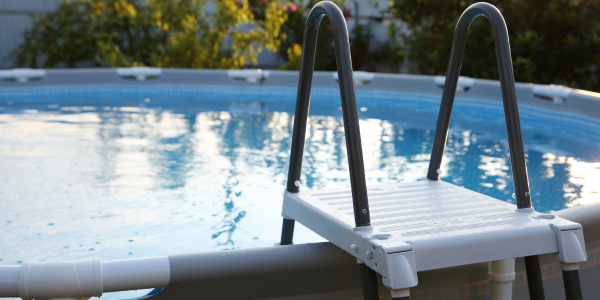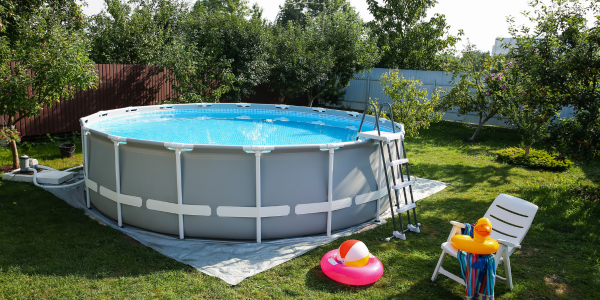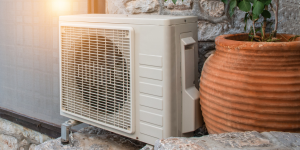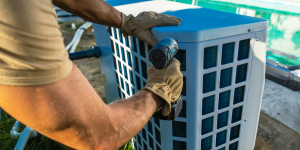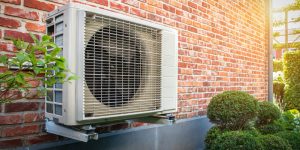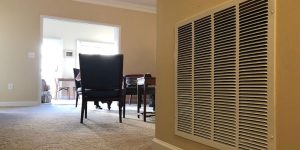Are you interested in squeezing in weeks (or even months) of extra swim time this summer? When it comes to heating an above ground pool, this is a real possibility if you do it right. As a technician who installs pool heaters all season long, I’m here to give you the real story: what works, what doesn’t, and how to pick the best above ground pool heater without wasting your time (or your hard earned money).
And no matter what you pick, using a solar cover to trap heat overnight is a total game-changer. (Seriously, it’ll be the $100 you ever spend.)
Let’s dive into it (figuratively, so you can do it literally).
How Do You Heat an Above Ground Pool?
Heating an above ground pool in Canada isn’t that different from heating an inground pool—the main difference is how fast above ground pools lose heat. Because the water is exposed on all sides (no insulation from the ground like an inground pool has), you have to be smarter about both how you add heat and how you keep it.
You’ve got the same main heating options: Solar pool heaters, Propane pool heaters, Electric pool heaters, Heat pumps
But! Above ground pools usually require:
- Smaller heater sizes
- Smarter insulation (like using a solar blanket religiously)
- Careful cost analysis, because the wrong setup can be overkill
Above Ground vs Inground: What You Need to Know About Pool Heaters
While above ground pools and inground pools can technically use the same types of heaters—solar, propane, electric, and heat pumps—the way you size, install, and operate them needs to be a little different.
Here’s what you need to watch for when choosing an above ground pool heater:
1. Sizing Matters (And Smaller is Usually Better)
Above ground pools usually hold less water (10,000–20,000 gallons max) compared to a big inground pool. That means you don’t need a massive 400,000 BTU heater like you might for an Olympic-sized backyard oasis.
➔ Tip: Look for heaters in the 50,000–150,000 BTU range depending on your pool size.
2. Faster Heat Loss Means Smart Heating Choices
Above ground pools lose heat much faster because they’re exposed on all sides—wind, air, and cool nights steal warmth quickly.
➔ Tip: It’s critical to pair your heater with a good solar cover to lock in that heat overnight.
3. Installation Can Be Simpler (But Not Always DIY)
Some smaller propane and electric heaters are “plug and play” for above ground pools, but anything involving gas lines, propane tanks, or heat pumps should still be installed professionally—especially to meet Canadian safety codes.
4. Solar Systems Work Even Better (If You Size Them Right)
Because above ground pools have smaller surface areas, solar mats and panels can be incredibly effective—if you install enough of them.
➔ Tip: For real results, your solar array should equal at least 50%–100% of your pool’s surface area.
5. Heat Pumps Need Careful Sizing Too
Heat pumps work great, but you’ll want to size slightly larger than normal.
➔ Tip: Go one size up if your backyard is exposed to strong winds, which cool the water faster than you expect.
Heating an Intex Pool
If you’re working with a soft-sided above ground pool like an Intex, Bestway, or Coleman, you’re playing a different game.
- A solar mat or compact plug-in heater works for pools under 15 feet.
- Larger Intex setups may benefit from a small heat pump or propane heater—but sizing and fittings matter (watch your hose sizes).
- Make sure you’re using heaters compatible with soft-wall pool pressures.
Pro Tip: Always double-check your pump size and hose fittings before buying anything. Intex fittings are famously non-standard.
Solar Heater for Above Ground Pools
If you want the cheapest way to heat an above ground pool in Canada, solar heaters are where you start. Solar heaters use the sun’s free energy to warm your pool water as it circulates through black mats or rigid panels. You hook them up to your existing pump and set them out in full sun (on the ground or roof).
For detailed pros and cons of solar pool heaters, check out this post.
Quick Tip: Solar covers (blankets) boost solar heaters’ effectiveness by reducing overnight heat loss by up to 75%.
Propane Heater for Above Ground Pools
If you want fast, on-demand heat—rain, shine, or freezing morning—propane heaters are the ticket. They burn propane to heat water quickly, raising the temperature of your above ground pool by several degrees per hour if sized properly. Great if you swim weekends only and don’t want to waste energy heating all week.
Want to know more about the costs and best uses of a propane pool heater, read this.
Pro Tip: Even smaller propane heaters work well for above ground pools. You often don’t need the monster sizes meant for inground pools.
Electric Pool Heater for Above Ground Pools
Electric resistance heaters are simple machines—basically, they heat water like a giant kettle. They’re quiet, compact, and easy to install, but not super energy-efficient for large pools. Good for smaller above ground setups that don’t need a huge volume of water heated daily.
Find out more about the pros and cons in this section.
Expert Tip: Size your electric heater based on the coldest water temperature you’ll need to overcome, not just your ideal swim temperature.
Heat Pump for Above Ground Pools
If you want steady, affordable heating all season long, a heat pump is one of the best upgrades you can make—especially if you swim almost daily. A swimming pool heat pump works like an air conditioner in reverse: it pulls warmth from the air outside and transfers it into your pool water. In a Canadian summer, even with cooler nights, a properly sized heat pump can maintain a comfortable swimming temperature from May to September. The trick with heat pumps? They work best when daytime air temperatures are above 10°C and they heat slowly, but once your pool is up to temperature, they’re very cheap to maintain (and can can cut heating bills by 50–75% compared to gas heaters).
With proper maintenance, your above ground pool’s heat pump could last 10–15+ years. Read more here.
Pro Tip: Always size your heat pump slightly larger than “recommended” for above ground pools — the extra exposure to wind and air cools water faster than in-ground setups.
The Cheapest Way to Heat Above Ground Pool
If you want the cheapest heating method, here’s the formula we recommend to every homeowner:
- Use a solar blanket daily (retains up to 70% of your heat overnight).
- Install a solar heater if you get decent sun (even partial setups help).
- Smart pump timing — run water through solar mats in the late morning to late afternoon.
- Only use propane or electric backup when needed (e.g., for weekends or parties).
💡 Bonus Tip: Doubling up solar mats or adding a second bank of panels can boost your results massively without adding much cost.
My Final Thoughts on Above Ground Pool Heaters
Above ground pools may be smaller, but heating them still takes the right setup—especially in Canada, where every swimming day is precious. Whether you go with a solar system, a propane heater, or a compact electric unit, the right heater paired with a good solar cover can easily double or triple your swim season.
If you’re unsure what size heater you need, or whether solar, propane, or electric makes the most sense for your backyard, we’re here to help. As a technician who works with pool heaters all summer long, I can make sure you pick a heating system that works for your above ground pool, your budget, and your lifestyle.
Want to stretch your swimming season this year? Contact Wamboldt HVAC for a personalized above ground pool heater recommendation and a free installation quote.

